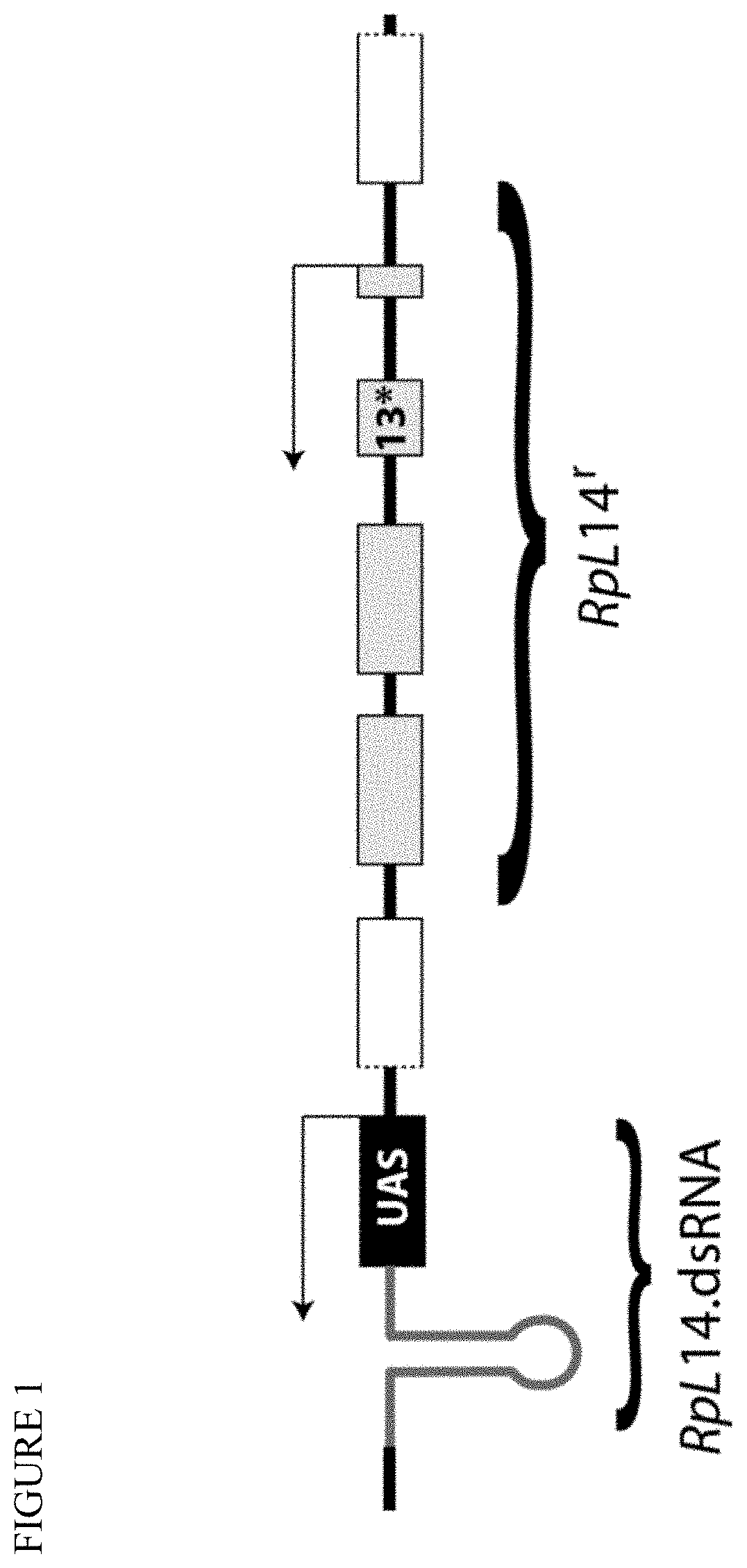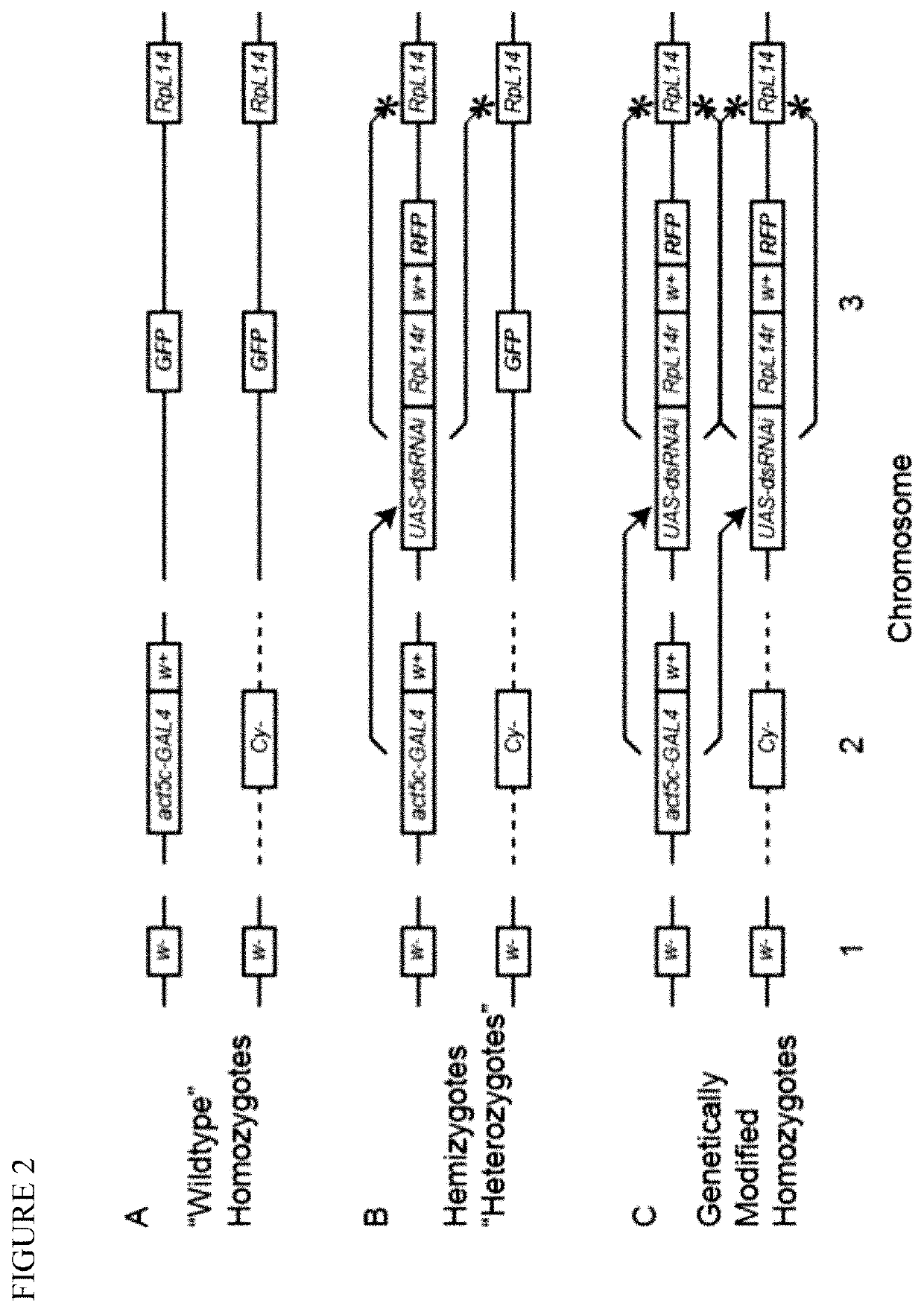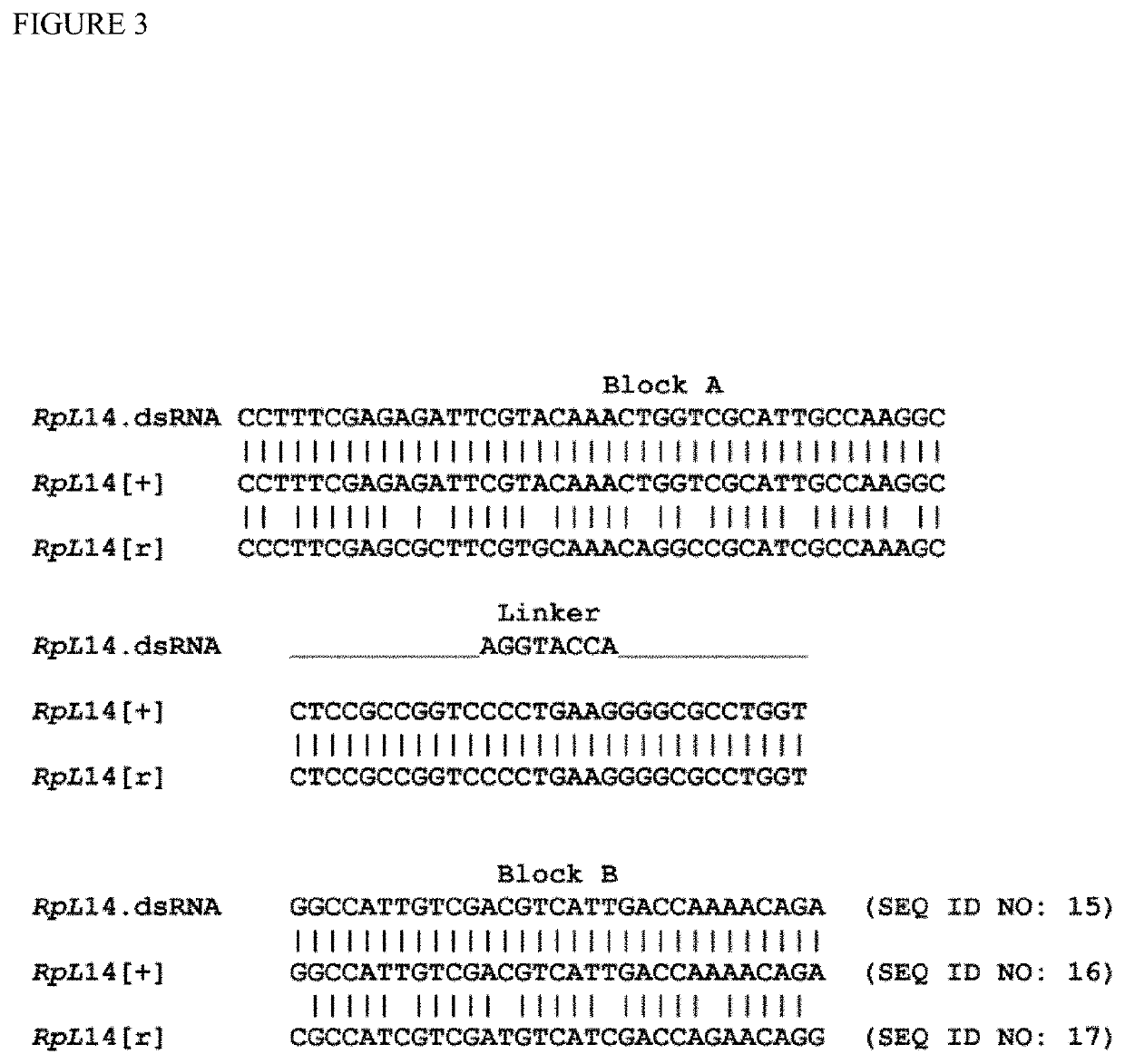Stable transformation of a population and a method of biocontainment using haploinsufficiency and underdominance principles
a technology of underdominance and population, applied in the field of stable transformation of a population and a method of biocontainment using underdominance principles, can solve the problems of hemizygous offspring with reduced fitness, and achieve the effects of reducing competitive fitness, reducing the expression of a haploinsufficient gene, and reducing the expression of the organism
- Summary
- Abstract
- Description
- Claims
- Application Information
AI Technical Summary
Benefits of technology
Problems solved by technology
Method used
Image
Examples
example 1
[0225]The endogenous haploinsufficient gene targeted in the construct described is RpL14 (cytogenetic location 66D8), which is a cytoplasmic ribosomal protein (CRP). Heterozygous mutations in RpL14 result in a classic strong Minute phenotype with delayed development, slender scutellar bristles and reduced female fertility (Sæbøe-Larssen et al., 1997 Molecular and General Genetics 255:141-151). The knock-down (RpL14.dsRNA) is a dsRNA inverted repeat, targeting RNAi to 67 bp of the endogenous RpL14 wildtype mRNA (RpL14+). The rescue (RpL14r) is a complete copy of the wildtype RpL14 gene (including its promoter and flanking regions) where 14 synonymous mutations had been introduced within the 67 bp region targeted for RNAi by RpL14.dsRNA (described in further detail below). The number and position of synonymous changes ensures that all of the approximately 21 bp siRNA fragments predicted to be produced by Dicer proteins for RNAi targeting incorporated a minimum of 3 mismatches. A genet...
example 2
Determining Gene Expression Levels with Quantitative RT-PCR
[0257]Total amounts of RpL14 mRNA and the ratios of endogenous RpL14+ transcript to the RpL14r rescue construct were assessed with two-step reverse-transcription quantitative PCR (RT-qPCR). RNA was isolated from 10 adult flies for each sex or 10 unsexed L3 stage larvae using Trizol (Invitrogen) and DNAse treated using a PureLink RNA Mini Kit (Invitrogen). RNA quality was assessed using a NanoDrop spectrophotometer and 100 ng of RNA was used for cDNA synthesis using Maxima First Strand cDNA synthesis kit for RT-qPCR (Fermentas). 1 μL of the resulting reaction was used for as a template for qPCR, using TaqMan Fast Master Mix (Applied Biosystems) for relative ratios or SYBR Green Fast Master Mix (Applied Biosystems) for total RpL14 mRNA levels. Each sample was run in triplicate on an ABI 7900HT machine (Applied Biosystems).
[0258]Both wild-type and rescue PCR products were amplified with the same primer pair sitting over an intr...
example 3
{Ud86} Effects on Life-History Traits
[0262]Given the strong fitness reduction in heterozygotes and the pleiotropic impact of CRP hypomorphs (see S. J. Marygold et al., 2007 Genome Biology 8:R216; Sæbøe-Larssen, S. et al., 1997 Molecular and General Genetics 255:141-151), life history and morphological traits that could correlate with this genotype were examined. No overt morphological abnormalities in either {Ud}86 genotype were observed. Interestingly, heterozygotes do not exhibit the short and thin scutellar bristles that are a characteristic feature of the RpL14 Minute phenotype and most D. melanogaster CRP mutations. However, in common with Minute phenotypes, heterozygotes exhibited a development time prolonged by approximately 20 hours (see FIG. 7A, P−30), while {Ud}86 / {Ud}86 homozygotes exhibited no significant differences from wildtype homozygotes (experiments described below). Furthermore, no difference in dry weight was observed between adults of the three genotypes (males,...
PUM
 Login to View More
Login to View More Abstract
Description
Claims
Application Information
 Login to View More
Login to View More - R&D
- Intellectual Property
- Life Sciences
- Materials
- Tech Scout
- Unparalleled Data Quality
- Higher Quality Content
- 60% Fewer Hallucinations
Browse by: Latest US Patents, China's latest patents, Technical Efficacy Thesaurus, Application Domain, Technology Topic, Popular Technical Reports.
© 2025 PatSnap. All rights reserved.Legal|Privacy policy|Modern Slavery Act Transparency Statement|Sitemap|About US| Contact US: help@patsnap.com



